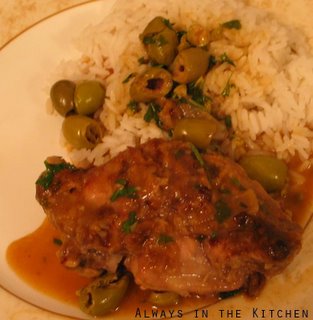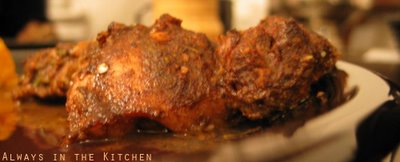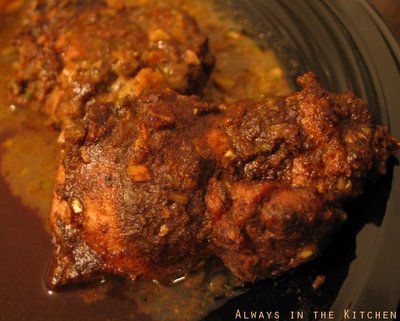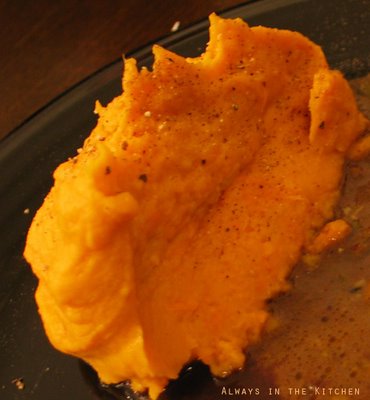
It's a fortifying soup. Rich without being fatty, filling thanks to the chunks of tender beef and the plump grains of barley, not to mention the slightly exotic and ever-so-suggestively boozy shiitake mushrooms. This, my tongue informs me, is what soup is supposed to taste like. It isn't just a catch-all of leftovers shunted into a pot full of water or stock, it's a precision-strike in the kitchen, each ingredient calibrated to bring a specific characteristic to the party.
I am gradually shifting most of my eating patterns towards foods with a lower glycemic index - loosely, this means foods with "staying power" - that don't instantly get converted into glucose the moment they hit my stomach. I should note that I am not categorically shunning any food or category of food, but that I am making an effort to eat thoughtfully in such a way that my blood glucose levels achieve a kind of Tao - an even-keel instead of the sugar spikes and crashes that can be problematic with my particular health concerns. This means that I am increasing my use of the foods that achieve the slower digestion that will benefit me. One of the big players is barley.
I confess that it has been a while since I made anything with barley. I don't have anything against it, in fact I quite like the flavour, but to me it has never been anything other than soup or stew. I had a risotto made from barley and lamb broth at a restaurant in Scotland, and it was quite delicious - really almost more of a stew, but isn't that what risotto is? A kind of particularly creamy, luscious rice stew?
I thought I would start of small, though. A nice pot of the good old beef barley soup, perfect in the iffy weather of not-quite-spring. My mother made a lovely version using leftover roast beef, but since she was "cooking from her head" there was never any recipe written down. I decided to turn to the experts - Cook's Illustrated. I plugged the words Beef Barley Soup into their search engine, and it spat out the issue that contained the recipe - February 1998. From there, it was an easy saunter over to the bookshelf to extract the right slim volume (I am very proud to own every single issue of Cooks Illustrated magazine) and turn to the right page.

Here is my version of their recipe - although I used the considerable shortcut of the entirely servicable Pacific brand beef broth. I only made a half-recipe, since I only had one litre of broth, but next time I make this I will make at least a whole recipe - gosh, maybe even a double! It's that good, people. I tweaked the recipe here and there for other reasons, too, but as you can tell I'm very happy with the result. The following recipe is for the quantity that I made:
Beef Barley Soup
Adapted from Cooks Illustrated
1 lb. bottom blade steak, cubed into stew-sized pieces, lightly salted
1/2 cup white vermouth
1 litre beef broth (I used Pacific brand, and was quite happy with it)
1 tablespoon canola oil
1 stalk celery, de-strung and finely diced
1 med onion, finely diced
2 cloves garlic, minced
2 carrots, peeled and cut into quarter-coins
6 large shiitake mushrooms, stem removed, sliced into half-slices
1/4 tsp powdered thyme
1 tablespoon tomato paste
1/4 cup pearl barley
1/4 cup parsley, chopped
salt
pepper
2 tablespoons dry sherry to finish
Preheat oven to 350 F. Preheat cast iron skillet on stove top.
In a dry, preheated cast iron skillet, sear the beef in batches until all pieces have a good, dark golden brown on at least two sides. Do not cook all the way through. Remove each piece as it is ready to your empty soup pot. Deglaze the skillet with the vermouth, and pour over the beef pieces. Add all of the beef broth, and place soup pot, covered, in the oven. Let the meat and broth stew together for an hour and a half. Toward the end of the stewing time, start prepping the rest.
In your skillet, heat the oil and saute the onion, celery, carrots, and mushrooms. If the mixture is too dry, deglaze slightly with a little water or vermouth. Continue to saute until onions are translucent and celery is tender. Add the garlic, thyme, and tomato paste, again with a little water if necessary to prevent sticking.
Remove soup pot from oven, and scoop out the pieces of beef to a cutting board. Chop the beef to soup-sized pieces and return to soup pot, along with vegetable mixture and barley. Simmer on the stovetop for about 40 minutes, or until barley is fully cooked and tender. Adjust for salt and pepper, add the chopped parsley and stir through. Remove from heat and stir in dry sherry. Serve with a nice hearty bread for a surprisingly filling dinner.
Serves 2 - 4, depending on what else you're serving and how greedy/hungry people are.















